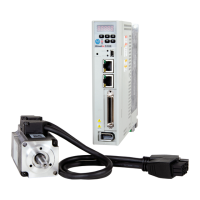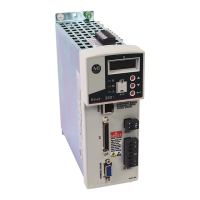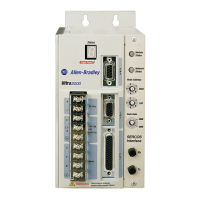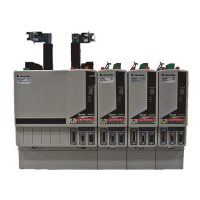294 Rockwell Automation Publication 2198-UM004A-EN-P - October 2019
Chapter 11 Motion Control in PR Mode
5. Rotation direction (Dir): available options are "Rotation forward
(Forward)", "Rotation in reverse (Reverse)" and "Rotation with the
shortest distance (Shortest)".
6. Target speed: determined by shared PR parameters.
7. Acceleration time (ACC): determined by shared PR parameters; the
length of time to reach the 3000 rpm speed from stopped.
8. Deceleration time (DEC): determined by shared PR parameters; the
length of time to decelerate from 3000 rpm speed to stopped.
Arithmetic Operation PR Display
You can use arithmetic operations and statements in any PR command
(PR#1…PR#99). It is identified or indicated as "Statement". When the condition
is fulfilled, an arrow pointing to the next PR command appears with a solid line.
If the condition is unfulfilled, an arrow pointing to the next PR appears with a
dotted line. You can choose to execute the next PR command and stop once the
execution is completed. See Figure 125
.
Figure 125 - Arithmetic Operation Display
1. Command execution type: an arithmetic operation command can
interrupt (INS) the previous PR command. If the Interrupt function is
enabled, it displays (I); if not, no information is displayed.
2. Statement number: displays the statement number used in the PR
command.
3. Execution time (Exe.Time): the time required to execute the arithmetic
operation.
Trigger Method for PR
Commands
This section describes the four trigger methods for PR commands.
Digital Input (DI) Trigger
You can choose the PR command to be executed by using internal registers
(position command Bit 0…Bit 6) and use a command to trigger the selected PR
command. Before using DI-triggering commands, you will have to define the 8
PR#1 (I)
Statement
S0
Exe.Time=3.89μs
2
3
True
False
PR#2
1
PR#1 (I)
Statement
S0
Exe.Time=3.89μs
2
3
True
False
1
PR#1 (I)
Statement
S0
Exe.Time=3.89μs
2
3
1

